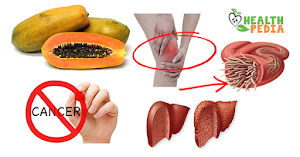Like us:
Share on FacebookSummer Time is fast approaching, which means you need to learn about protecting yourselves in the heat and humidity. Most people know they should wear sunscreen outdoors, but not many adults understand the importance of guarding against heat stroke. Follow these tips to prevent heat stroke at work and at home.
What is Heat Stroke?
Heat stroke is occurs after prolonged exposure to high temperatures. It often occurs in people who are also dehydrated, causing the body’s temperature regulation system to fail. Someone with heat stroke has a core body temperature of at least 105 F, along with symptoms related to the central nervous system.
What is Heat Exhaustion?
Heat Exhaustion is a precursor to heat stroke. It occurs when someone is exposed to high temperatures for a long period of time. If you spend a lot of time in high temperatures and don’t replace lost fluids, your body’s temperature regulation system becomes overwhelmed and produces excess heat. You should seek medical attention for heat exhaustion so it does not turn into heat stroke, which is life-threatening.
Sign and Symptoms of Heat Exhaustion and Heat Stroke
Heavy sweating, headache, and excessive thirst are among the most common symptoms of heat exhaustion. This condition also produces the following signs and symptoms:
- Fatigue
- Clammy skin
- Dizziness
- Nausea and vomiting
- Rapid heartbeat
- Increased temperature
- Fainting
- Muscle cramps
If Heat Stroke progresses to Heat Exhaustion, the person’s body temperature may exceed 104 F. Other symptoms of heatstroke include dry skin, lack of sweating, throbbing headache, muscle cramps or weakness, rapid breathing, rapid heartbeat, seizures, and disorientation. Untreated heat stroke may lead to heart attack and death.
What to do for Heat Exhaustion and Heat Stroke
If you suspect you have heat exhaustion, there are several things you should do. The best thing to do is go indoors and sit in an air-conditioned room or a room with a fan. If you are at work and can’t go inside, move to a shady spot outdoors. Replace lost fluids by drinking cool water or a sports drink containing electrolytes. Avoid icy-cold drinks in favor of cool liquids. Cool off by spritzing cold water on your skin, taking a cold shower, or immersing yourself in a swimming pool or bathtub filled with cool water.
Heat stroke is a medical emergency. If you suspect someone you know has heat stroke, call 911 or take the person to the hospital immediately. While you wait for the paramedics to arrive, move the person to a cooler environment and remove socks, long-sleeved shirts, and other unnecessary pieces of clothing. Fanning the person, applying ice packs, or immersing the person in a tub of cold water are all ways to reduce core body temperature to a safer level.
Preventing Heat Stroke and Heat Exhaustion
You should always take steps to prevent heat stroke, whether you are working outdoors or enjoying fun in the sun. Always wear lightweight clothing, drink plenty of water, and avoid strenuous activity during the hottest parts of the day. If you take prescription medications, take special precautions to avoid extreme temperatures and dehydration.
If you work outdoors or in a hot warehouse, wear light-colored clothing made with breathable fabrics. When you get to work, build up to strenuous activities instead of starting with your most strenuous tasks. Take plenty of breaks to drink cool liquids and spend some time out of the heat. Avoiding alcohol and sugary drinks will help you prevent dehydration and reduce the risk of heat stroke.
Seeking Medical Attention
If you have the symptoms of heat exhaustion, come to Physicians Now to see an experienced healthcare professional. We’ll examine you thoroughly and administer fluids or medications to help you feel better.
Source: myphysiciansnow.com
Love this article? Share it with your friends and Like us for more Health Tips Updates!
How to Prevent Heat Stroke or Heat Exhaustion
 Reviewed by healthpedia
on
April 08, 2017
Rating:
Reviewed by healthpedia
on
April 08, 2017
Rating:
 Reviewed by healthpedia
on
April 08, 2017
Rating:
Reviewed by healthpedia
on
April 08, 2017
Rating:








No comments: